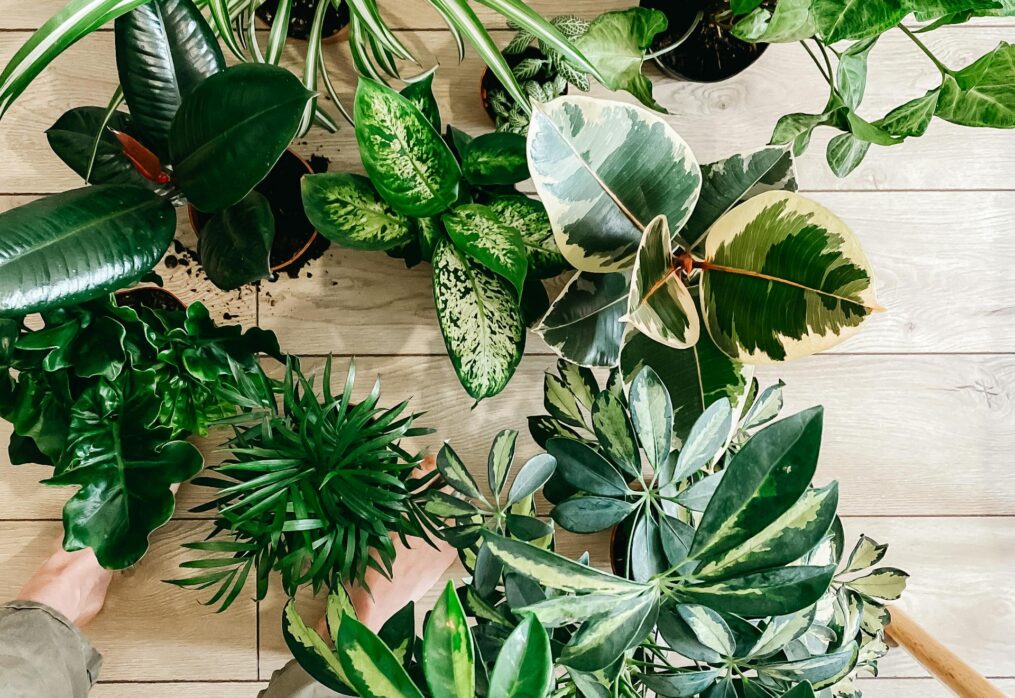Houseplants you can easily grow from leaves
Many fascinating plants grow from leaves, making them a popular choice for gardeners and plant enthusiasts. These leaf-planting plants include succulents, African violets, and begonias, which are known for their ability to propagate easily. If you’re curious about which plants grow from leaves, the process is simple: certain plants that grow through leaves can develop roots and new growth from a healthy leaf placed in soil or water.
For indoor gardeners, there are many houseplants that grow from leaves, offering an easy and rewarding way to expand your green collection. Wondering which plant can grow from leaves? Look no further than jade plants, snake plants, and peperomias, which are perfect examples of plants which grow from leaves and thrive in a variety of conditions.
Houseplants you can easily grow from leaves
Thinking about propagating a new houseplant from simply leaves, but aren’t sure which one is the best fit for your indoor garden space? There are a lot of houseplants that can develop from leaves alone, provided they receive the necessary care. In this post, gardening expert Madison Moulton looks at her favorite houseplants that will grow from only leaves! Propagating plants is a vital skill any houseplant parent should master, especially those on a budget. You may have tried propagating plants from cuttings, the go-to propagation method, but did you know there are also various houseplants that can be grown from a single leaf?
There are various drawbacks to propagating from single leaves. Firstly, the time it takes for a single leaf to grow into a whole plant is significantly longer than it would be utilizing any of the other propagation methods. It’s also not always as successful and typically requires some of the stems to be removed with the leaf to enable root development. However, if you’re meticulous about the technique and patient when it comes to development, you may end up with a magnificent plant that can grow from just one solitary leaf.
Let’s have a look at how 17 plants can develop from a single leaf!
1. Snake Plant
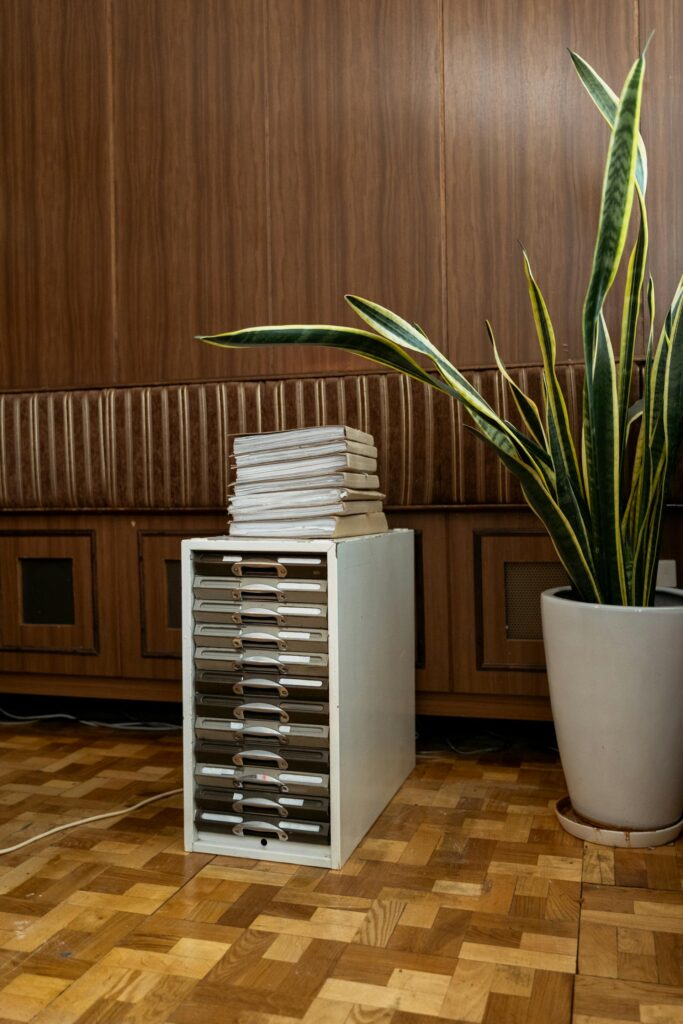
Although the snake plant does not need to be sprayed, its leaves should be cleaned at least once a month with a moist cloth to eliminate dust. When seeking the houseplant that has it all, few would disagree with Sansevieria, often known as Snake Plant or Mother-in-Laws Tongue. This plant is tolerant of practically any situation, has few issues, and is also one of the easiest plants to grow. With long, structural leaves and fascinating variegation patterns, it’s impossible not to desire more of these. Just one snake plant leaf may lend you several more in a few short steps. Start by cutting off one of the leaves at the base.
Choose a vigorous leaf with minimal damage or insect concerns to offer your propagation the best chance of success. Use a sharp, sterilized knife to avoid transferring illness to the cuttings or the parent plant. Next, cut the long leaf into portions roughly 4 inches long. Mark the bottom of each piece with a marker to ensure you put them root side down. Place the cuttings in a propagation mix of equal parts coconut coir and river sand, or use toothpicks to suspend the pieces in a glass of filtered water. You should witness root development within a few weeks, following which the cutting is ready to transplant into soil to mature into a fully-fledged snake plant.
2. Peperomia
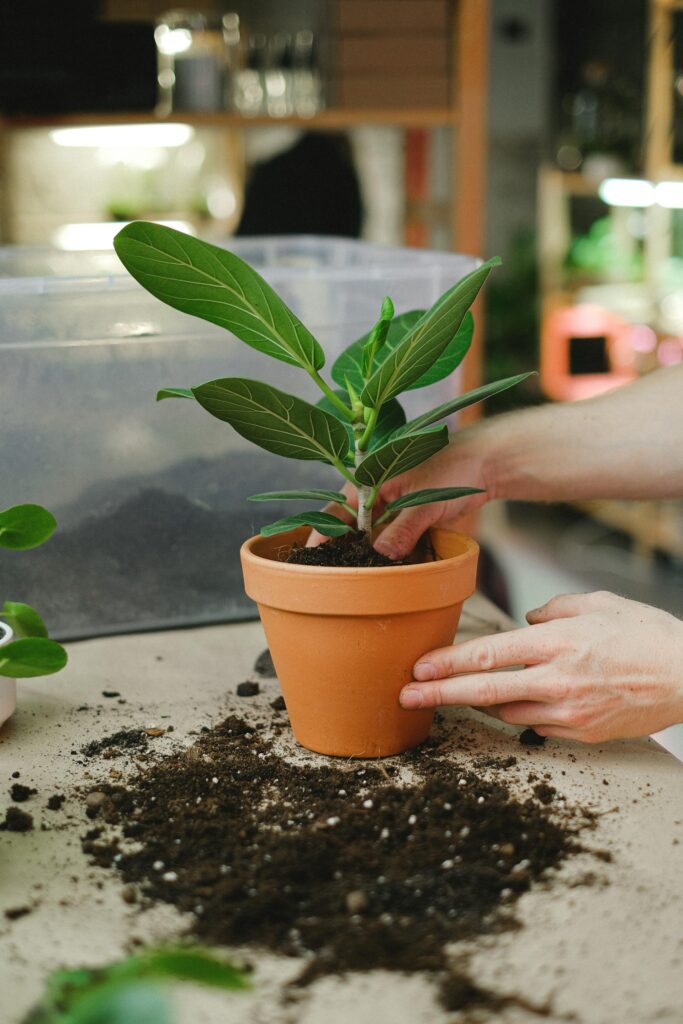
Peperomia does not tolerate waterlogging of the soil. Warm, gentle water is most suitable for irrigation.Peperomias, a genus of plant popular among collectors, has plenty of appeal. Also called Radiator Plants, this group requires minimal care and is great for novices. There are lots of species to select from, from the spherical P. obtusifolia (Baby Rubber Plant) to the social media sensation P. argyreia, better known as Watermelon Peperomia.
With so much variation, it’s easy to see why they have become collector’s goods. These plants may be grown in several ways, one of which is by leaf cuttings. Simply pluck a healthy, big leaf off the plant when the petiole (the little leaf stem) meets the stem of the plant. Plant in a propagation mix, keeping it wet to stimulate root development. You may also cut the leaf in half horizontally to save moisture, placing the cut side down into the soil to develop new leaves.
3. African Violet
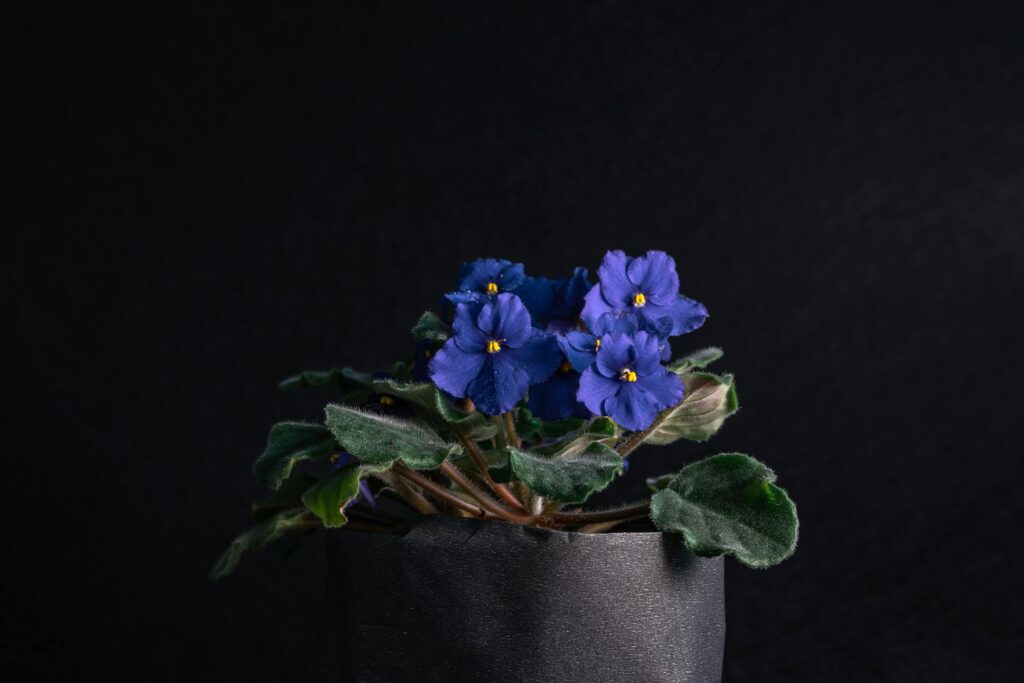 African violets prefer indirect light, not direct sunshine. A more classic houseplant once again coming back in popularity is the African violet. These small plants are appreciated for their velvety gray-green foliage and stunning purple blossoms that burst up during spring and summer when conditions are ideal. Much like the Peperomia, these plants are easy to cultivate from a single leaf cutting, giving you additional flowers during the season at virtually no expense.
African violets prefer indirect light, not direct sunshine. A more classic houseplant once again coming back in popularity is the African violet. These small plants are appreciated for their velvety gray-green foliage and stunning purple blossoms that burst up during spring and summer when conditions are ideal. Much like the Peperomia, these plants are easy to cultivate from a single leaf cutting, giving you additional flowers during the season at virtually no expense.
Using sharp and sterilized shears, remove a big and healthy leaf from the petiole. To focus energy toward new leaf growth rather than growing the present leaf larger, you can split the leaf in half horizontally; however, this step is not 100% required. Root in the propagation mix and keep it wet until new growth develops. New leaves should come up around the cutting within a couple of months.
4. ZZ Plant
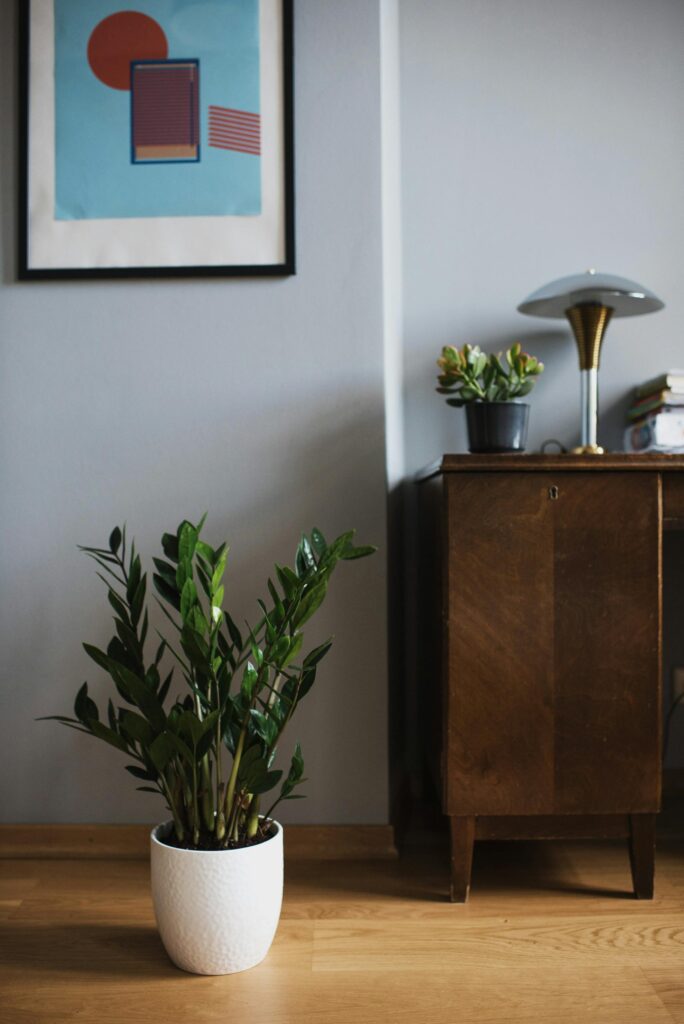
The ZZ Plant enjoys warmth, strong sunshine, and very modest watering. The ZZ Plant joins the Snake Plant on the short list of practically unkillable plants. As those who already have one of these houseplants will testify, you may leave it alone for weeks or even a few months, and it will continue to look as lovely as the day you purchased it. The structured leaves are unlike any other houseplant on the market, and new cultivars are being created with unique hues and growth patterns.
To reproduce Zamioculcas zamiifolia from a single leaf, start by picking a healthy stem. Remove a few leaves using your fingers, detaching part of this stem at the same time. Simply root these in a seedling dish filled with propagation mix. Only bury the very bottom of the leaf to stop the remainder from decaying. They may take a bit to mature, but they will be well worth the wait.
5. Begonia
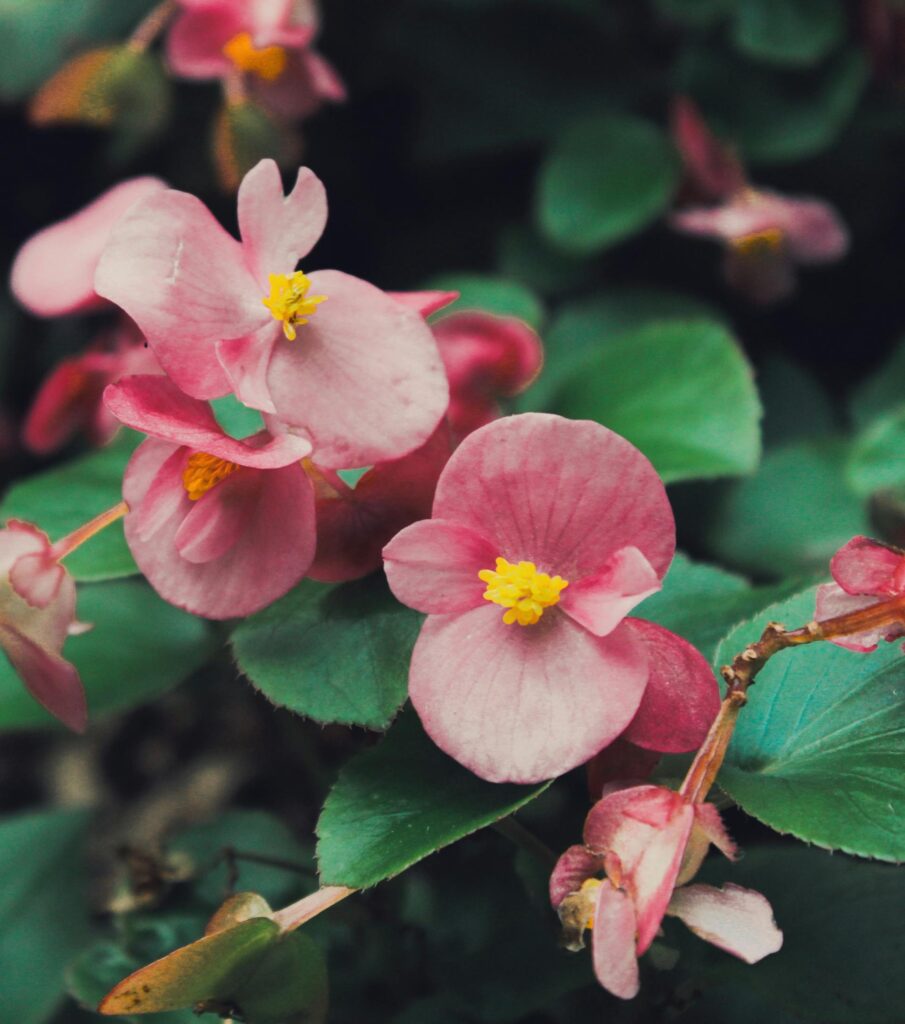
For Begonia rex, shady areas or northern windows are absolutely unsuitable. Also, you should find settings for begonias that are sheltered from direct sunlight.Another indoor flowering favorite, Begonia rex, is not one of the most popular indoor plants; it is commonly planted outside as a shade plant. However, if you’re wanting to add a splash of color to your interior environment, the leaves of this plant are the way to go. Featuring fascinating textures and patterns in reds, purples, greens, and more, these plants know how to bring drama and intrigue to an indoor setting. The leaf propagation procedure for this plant is slightly different.
Start by picking a big leaf with plenty of veins and no evidence of illness or injury. Remove it from the plant and flip it over so the underside is exposed. Then, using a sharp blade, make short 1-inch incisions along the veins of the leaf, concentrating on sections closest to the root. Flip the leaf back over and set it on a seedling tray filled with propagation mix. Pin it to the soil using bent paper clips to retain contact and keep it moist until new growth starts.
6. Kalanchoe
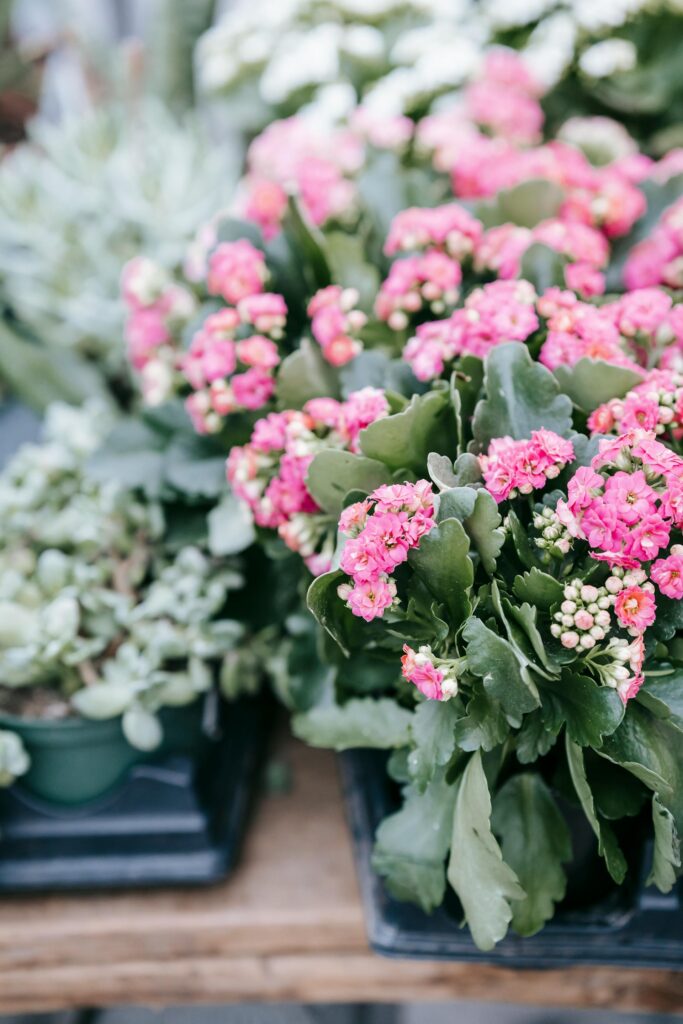
It can grow healthily at practically any air temperature.There are roughly 125 kinds of succulent Kalanchoe plants that come from tropical Africa. Out of them, it is mainly Kalanchoe blossfeldiana that is found in nurseries and cultivated indoors. In late winter and early spring, they produce clusters of blooms in vivid yellow, red, orange, pink, and white. They blossom for months at a time, and with a little rest period, low light management to induce budding, and a good dose of fertilizer, they may rebloom, making them attractive interior plants.
The best way to reproduce this type of plant is by stem or leaf cuttings. For leaf propagation, pick healthy leaves and lay them on a piece of newspaper in a dry position for 2-3 days to allow the ends to callus over, preventing rotting. Fill a clean container with moist succulent mix or prepare your own with coarse sand, perlite, and coconut coir. Place the callused portion of the stem adhering to the leaf into the soil mix. Place in a warm area out of direct sunlight and mist every so often, but don’t overwater. They should root in a few weeks and may then be moved into their own pots.
7. Jade Plant
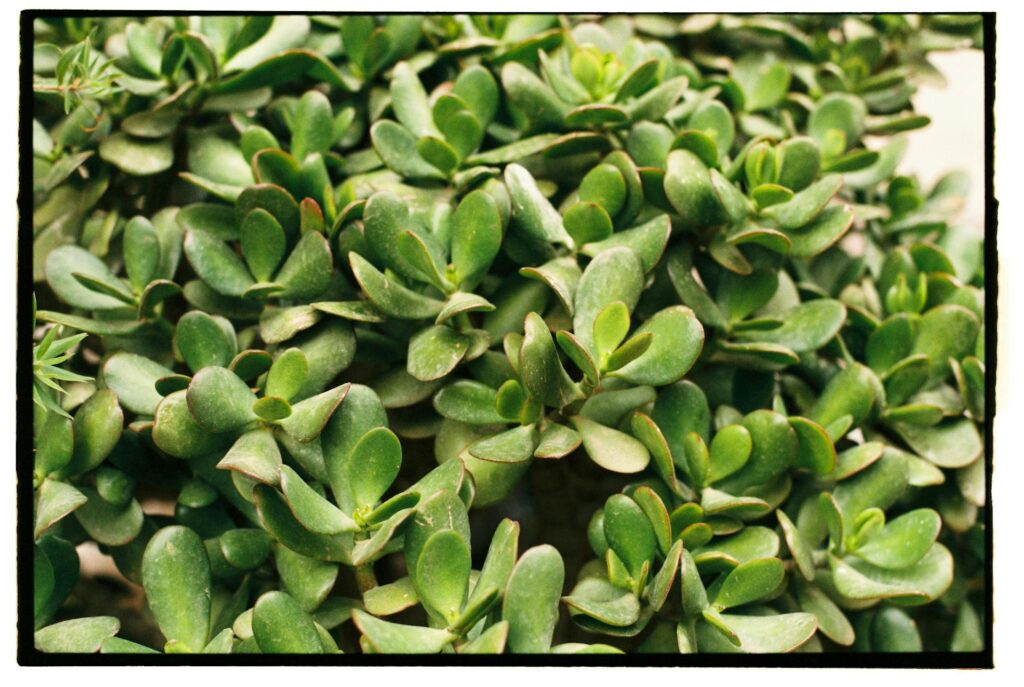
From the beginning of spring to fall, the crassula ovata should be watered no more than twice a week. A plant that takes practically little maintenance is the jade plant, or, as it’s botanically termed, Crassula ovata. It appears like a little tree once grown, with gorgeous clusters of pink and white star-shaped flowers that bloom on the terminals of the branches. This gorgeous houseplant will last a lifetime with appropriate care. To create new plants from Crassula ovata leaves, pluck the leaves from a healthy adult plant and allow them to sit for a few days in a warm spot to callus over the cut ends.
This reduces root rot and facilitates rooting. Fill a pot with somewhat moist potting soil; take each leaf and set it on top of the dirt horizontally. Cover the callused end of the leaf with a little dirt and set the container in bright indirect sunlight. Wait a few weeks before watering to allow the small roots to establish in the soil. After two weeks, gently tug the plant to check the roots. If they feel secure, water thoroughly to encourage the roots to migrate deeper into the soil and establish themselves.Let the soil dry out and water again. Keep this up until the plants are looking excellent and ready for their own pots.
8. Hoya kerrii
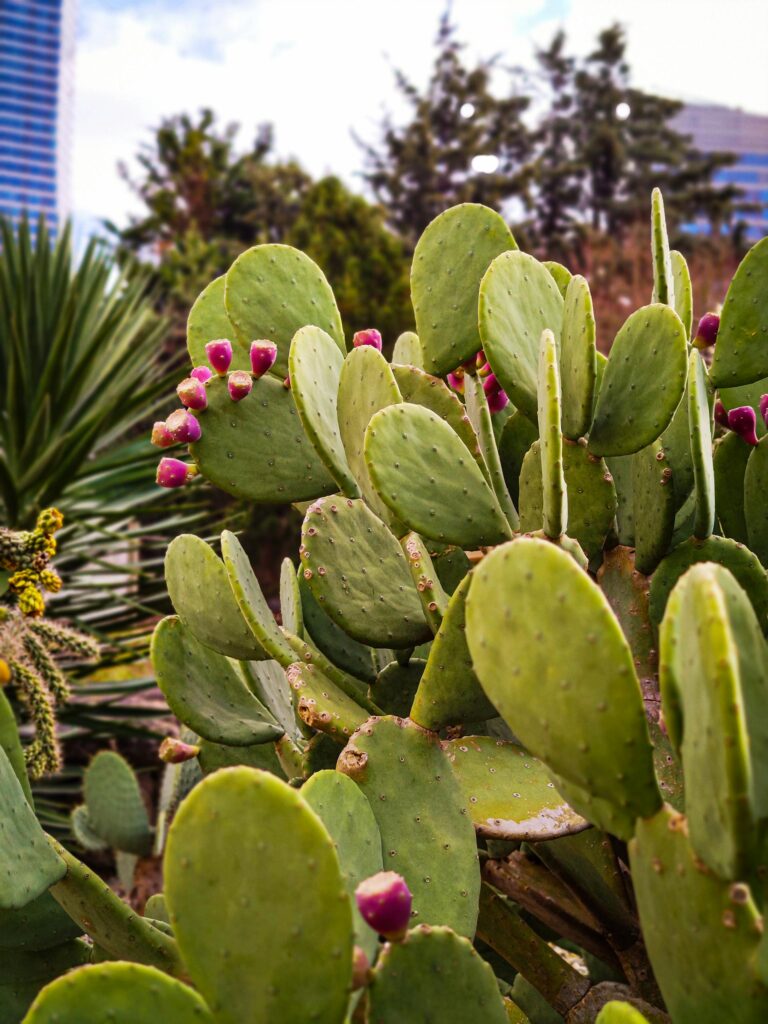
It requires moisture and does not tolerate dry air. Out of all the 500 or so kinds of Hoya, the Sweetheart Hoya is possibly the most popular for its huge, juicy, heart-shaped leaves. These tropical vines are easy to cultivate and care for, making them a highly popular houseplant, especially around Valentine’s Day. They are not finicky, needing bright sunshine, a little water, and well-draining soil to grow. They will only bloom when they are 3–4 years old, but when they do, it’s truly a spectacular event. The balls of fuzzy, star-shaped blooms are absolutely remarkable. Single-leaf propagation is achievable with these plants, and they look best when grown in tiny pots. However, due to the sluggish development of these plants and the fact that leaf cuttings do not have a node, they will more than likely not grow into a complete vine.
Growing a single leaf as a decorative feature or gift is still a fascinating experience, but if you want it to grow into a complete plant, propagate it by cutting stems instead. To produce the single leaf cuttings, fill a container with a damp potting mix mixed with a little perlite to aid drainage. Cut the leaves off a healthy plant with as much stem as you can manage. Let the leaves sit out in a dry environment for 2–3 days so the ends callus. Pot them into the soil vertically so the surface of the leaf does not sit on the dirt. The cuttings should root in 2–3 weeks. Choose single containers to grow them rather than a huge pot for many leaves, as they will stay in their individual pots for a long period of time.
9. Chinese Money Plant
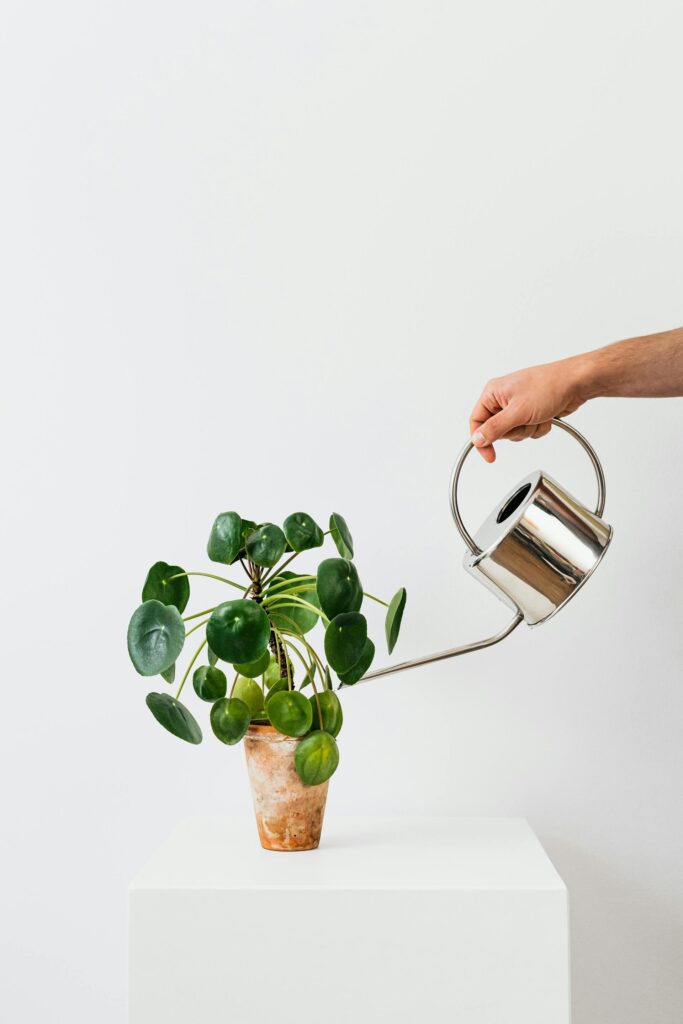
This plant may flourish in shaded regions with surroundings and soils with high humidity. Pilea peperomioides, often known as the Chinese Money Plant or Pancake Plant, has the most gorgeous circular leaves—almost like a water lily leaf without the need for water. This succulent plant is grown for its leaves. Although it does also blossom in spring, it’s unlikely to flower inside. All it needs to flourish is a bright light, periodic watering, and some light feeding in the growing seasons of spring and summer. The leaves prefer to drift towards the light; therefore, it’s essential to rotate the plant regularly to retain its symmetrical structure.
Offshoots that develop from the roots or leaves may reproduce this plant. For the leaves to grow into complete plants, you need to take a piece of the main trunk as well as the leaf to make it perfect. Use a sharp knife and follow the leaf down to the stem. Take a tiny slice of the trunk—not too much; you don’t want to harm the main plant—and root in water. Place the base of the stem in the water, not the leaf. Change the water at least once a week, gently working around the sensitive young roots since they will be frail at this point. Place it in a bright spot out of direct sunlight, and within a month or two, new plantlets will grow at the base of the stalk. You can then plant these in their own pots.
10. Echeveria
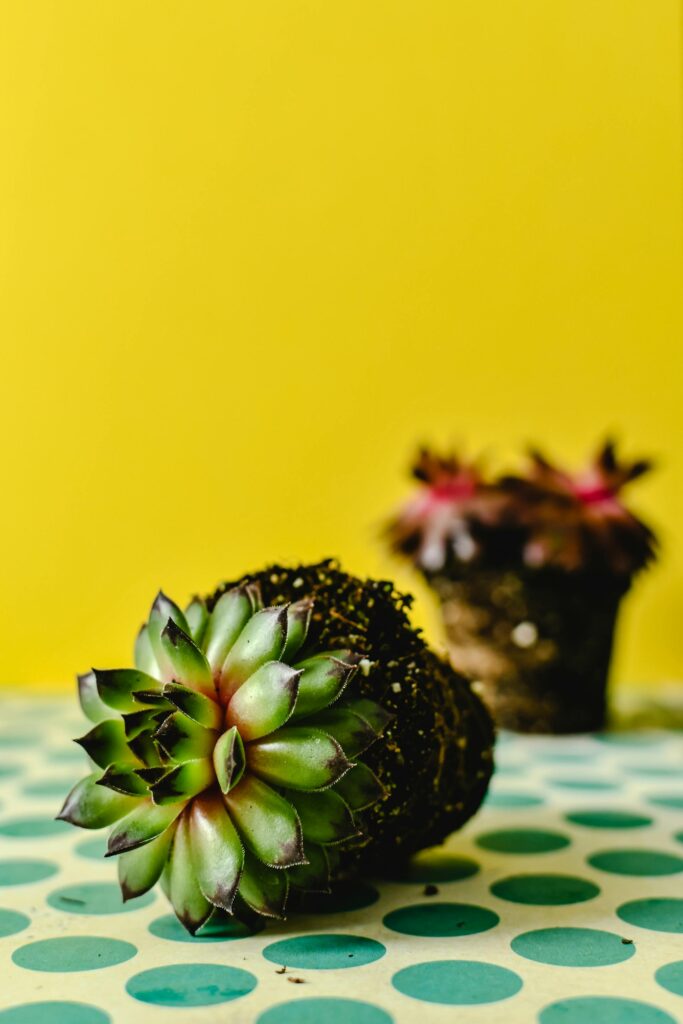
It is drought-resistant, so let the soil dry out completely between waterings. Growing echeveria indoors can be challenging because they need a full day of sunlight to thrive. A lack of sunshine will lead them to grow lanky and uninteresting.
If you have a space like a sunroom or a conservatory with loads of direct sun, they are wonderful plants to cultivate. Sought after for their rosettes of leaves and flower stalks that develop from the center of the plant, they produce tiny blooms in a variety of hues, including white, pink, yellow, orange, and red.
Propagating this type of Plant is really straightforward. Take a sharp knife and snip the low leaves off a healthy plant at the stem. Lay the leaves on a sheet of newspaper and store them in a cool area for a few weeks. The clipped ends of the leaves will create small clusters of leaves that will form new plants. Once the roots develop, they may be placed in pots to grow into bigger plants.
Final Thoughts
If you’re seeking to create more of your favorite plants, consider propagating them from leaves. It may take somewhat longer, but considering the little work and time it takes, this technique is definitely worth it. Any of the plants on this list will grow from a single cutting if given the necessary time and sufficient care.
I recommend checking out:
5 tips to maintain jasmine plant in your garden 10 flowering plants perfect for hanging garden 10 Aromatic Plants to Soothe Your Senses
Last Updated on 1 week ago by Anjali Mehra Ph.D. in Horticulture (Punjab Agricultural University)
- Best Lawn Grass for High-Footfall Religious Places in Punjab - December 29, 2025
- Why Lawn Grass Fails After Installation (Real Indian Case Studies) - December 25, 2025
- Nilgiri Grass vs Korean Grass – Price, Look & Maintenance Compared - December 23, 2025
